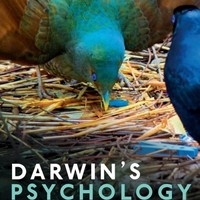Ben Bradley
Charles Sturt University, Psychology, Emeritus
- Educated in Human Sciences at Oxford and a lifelong researcher into infants' sociability and the origins of humanity, my main research achievements include showing human infants have a capacity for group-level interaction from the middle... moreEducated in Human Sciences at Oxford and a lifelong researcher into infants' sociability and the origins of humanity, my main research achievements include showing human infants have a capacity for group-level interaction from the middle of their first year and proving agency has a central place in Darwin's conception of evolution and psychology. My most recent book is 'Darwin's Psychology: The Theatre of Agency' (OUP, 2020).edit
Recent Darwin scholarship has provided grounds for recognising the Origin as a literary as well as a scientific achievement. While Darwin was an acute observer, a gifted experimentalist and indefatigable theorist, this essay argues that... more
Recent Darwin scholarship has provided grounds for recognising the Origin as a literary as well as a scientific achievement. While Darwin was an acute observer, a gifted experimentalist and indefatigable theorist, this essay argues that it was also crucial to his impact that the Origin transcended the putative divide between the scientific and the literary. Analysis of Darwin's development as a writer between his journal-keeping on HMS Beagle and his construction of the Origin argues the latter draws on the pattern of the Romantic or Kantian sublime. The Origin repeatedly uses strategies which challenge the natural-theological appeal to the imagination in conceiving nature. Darwin's sublime coaches the Origin's readers into a position from which to envision nature that reduces and contains its otherwise overwhelming complexity. As such, it was Darwin's literary achievement that enabled him to fashion a new 'habit of looking at things in a given way' that is the centrepiece of the scientific revolution bearing his name.
